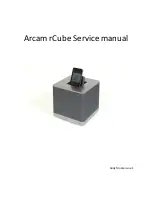
20
5
SETUP
Installation
The speaker systems can be placed as desired or put onto a speaker stand via the stand flange on the lower
side. Always install the PA system at a solid, plane, anti-slip, vibration-free, oscillation-free and fire-resistant
location. Make sure that the installation complies with the standards and rules that apply in your country. The
product must be installed securely and prevented from falling down.
Making the Connections
To avoid interfering noise, switch off the PA system or set the output controls to minimum prior to connecting
and disconnecting equipment. Be sure to use only high-grade cables.
1
Connect microphones to the input jacks of channels CH 1 and CH 2. Set the corresponding
LINE/MIC
selector switch to position MIC.
2
There are several input jacks available for audio units with line level: Use input CH 1 and CH 2 for units
with mono output (e.g. instrument preamplifiers). Set the corresponding
LINE/MIC
selector switch to
position LINE. Use input CH 3/4 for units with stereo output (e.g. mixer). The
AUX
input is also designed
for stereo signals.
3
Connect the left speaker output and the right speaker output (6.3 mm jacks) to the speaker systems with
the speaker cables supplied.
4
If a monitoring system is available, connect the amplifier of the monitoring system or the active monitor
speakers to the stereo output
MONITOR OUT
.
5
Finally, connect the supplied power supply cable to the corresponding input and the mains plug to an
outlet (AC 230 V, 50 Hz). The PA system can also be operated with AC 115 V, 60 Hz. For this purpose,
set the voltage selector switch to the 115 V position.
..............................................................................................................................................................................
6
OPERATION
1
First turn down the
MASTER
control for the overall volume to the left stop position to avoid a possible
switching-on noise. Then switch on the PA system. The
POWER
indicator lights.
2
Turn up the
MASTER
control so that the mixing ration of the signal sources can be adjusted in an
optimum way.
3
Adjust the desired volume ratio of the input channels with the
LEVEL
controls. Turn the controls of the
inputs not used to 0.
4
Adjust the desired sound of the mono channels CH 1 and 2 with the tone controls. By adjusting the tone
controls, the high frequencies and the low frequencies can be boosted or attenuated. With the controls
in mid-position, the frequency response is not affected.
5
A reverb effect created via the integrated effect processor can be added to the mono channels CH 1
and 2. Adjust the effect intensity with the
REVERB
control.
6
Adjust the definite level of the overall volume with the
MASTER
control. Only turn up the control to such
an extent that the sound reproduction will not be distorted. The
LIMITER
indicator lights up when the
signal level is too high so that the level limitation will be activated. If this indicator lights up frequently,
reduce the master volume or the volume of the input signals accordingly.
7
After operation, set the
MASTER
control to minimum, then switch off the PA system with the power
switch. The power indicator goes off.
Summary of Contents for Combo-160BT
Page 1: ......
Page 2: ......
Page 8: ...8 4 BEDIENELEMENTE UND ANSCHL SSE...





































